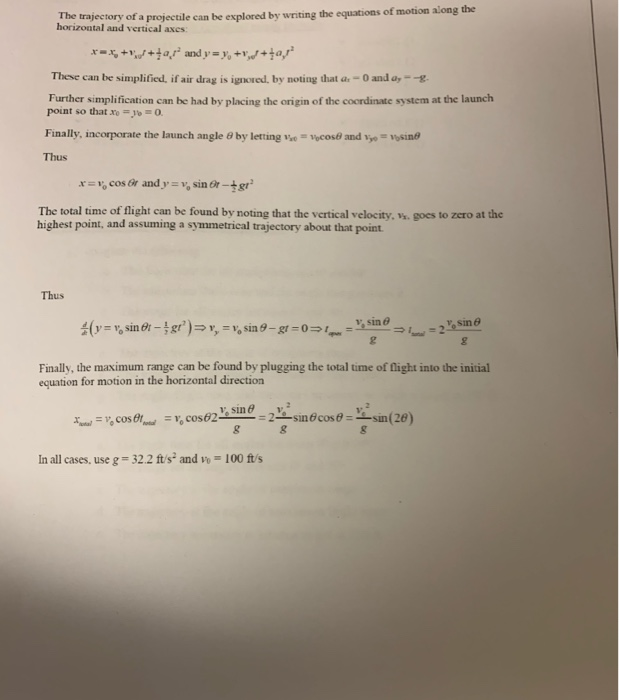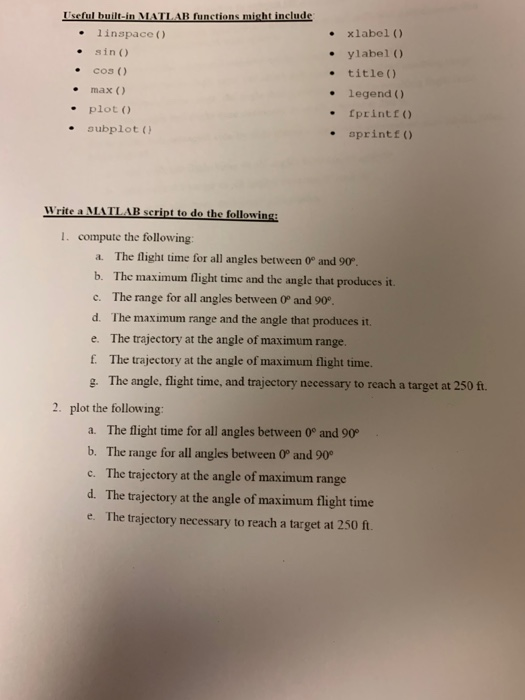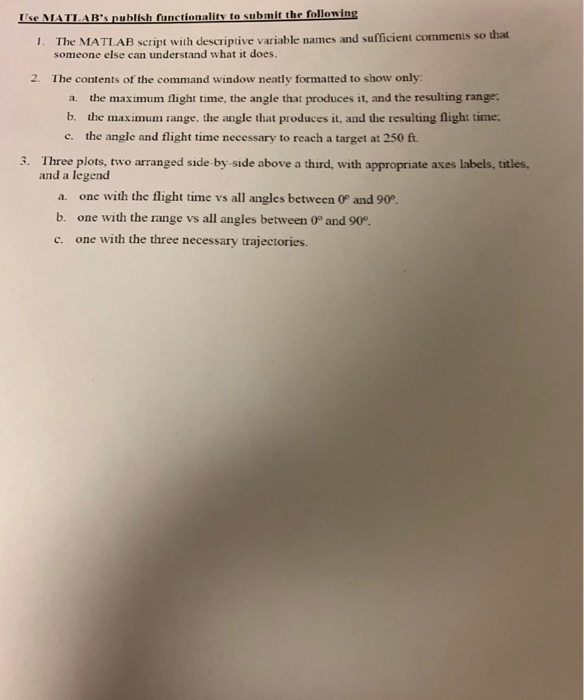The trajectory of a projectile can be explored by writing the equations of motion along the horizontal and vertical axes: x= x + +rand y = y +_+$9, These can be simplified, if air drag is ignored, by noting that a. -O and ay -- Further simplification can be had by placing the origin of the coordinate system at the launch point so that x = 0. Finally, incorporate the launch angle by letting cos and visine Thus x=v, cost and y = v, siner-gr The total time of flight can be found by noting that the vertical velocity. Ve goes to zero at the highest point, and assuming a symmetrical trajectory about that point. Thus (y=v, sin 0- gr)= ,= v, sin 9- gt=0= = "sin 21. Sin Finally, the maximum range can be found by plugging the total time of flight into the initial equation for motion in the horizontal direction av = vycostrmes = v, cos62 " sind 24sin cos e = sin(20) In all cases, use g = 32.2 ft/s and vo= 100 ft's Useful built-in MATLAB functions misht include linspace() sin() cOS () xlabel() ylabel() title() legend() fprintf() sprintf() max() plot() subplot Write a MATLAB script to do the following: 1. compute the following: a. The flight time for all angles between 0 and 90 b. The maximum flight time and the angle that produces it c. The range for all angles between 0 and 90. d. The maximum range and the angle that produces it. e. The trajectory at the angle of maximum range, f. The trajectory at the angle of maximum flight time. 9. The angle, flight time, and trajectory necessary to reach a target at 250 ft. 2. plot the following: a. The flight time for all angles between 0 and 90 b. The range for all angles between 0 and 90 c. The trajectory at the angle of maximum range d. The trajectory at the angle of maximum flight time e. The trajectory necessary to reach a target at 250 L Ilse MATLAB's publish functionality to submit the following 1. The MATLAB script with descriptive variable names and sufficient comments so that someone else can understand what it does. 2. The contents of the command window neatly formatted to show only: a the maximum flight time, the angle that produces it, and the resulting range: b. the maximum range, the angle that produces it, and the resulting flight time. c. the angle and flight time necessary to reach a target at 250 ft. 3. Three plots, two arranged side by side above a third, with appropriate axes labels, titles. and a legend a one with the flight time vs all angles between 0 and 90. b. one with the range vs all angles between 0 and 90 c. one with the three necessary trajectories









